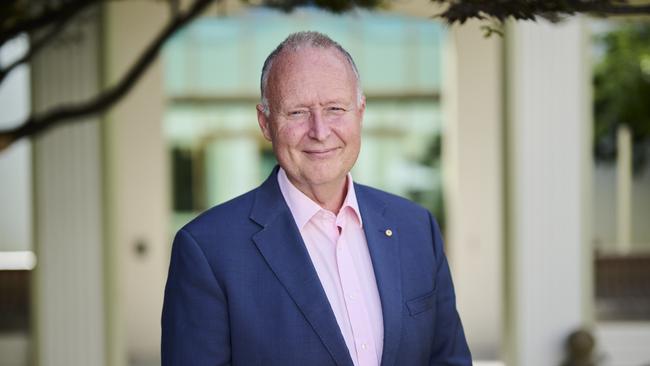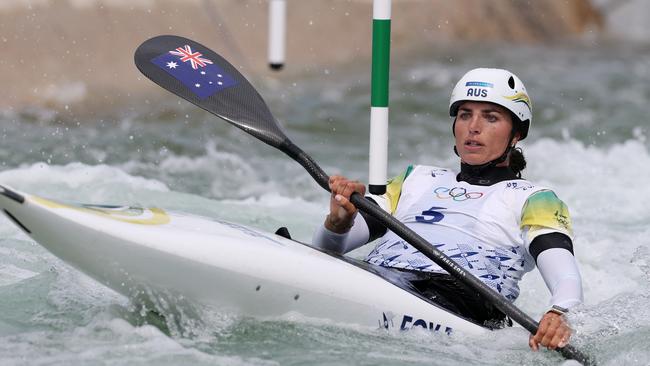Think again and boost support for our creative kids
We’re fourth in the world for creative thinking, but a cultural strategy could take us to the top.

At the close of the Paris 2024 Olympics, Australians celebrated our greatest performance at an overseas Games, finishing fourth in the medal tally. But what few people know is that just weeks earlier, Australia achieved another global fourth place: for our teens’ creative thinking.
In the Games medal tally, Australia was beaten only by the US, China and Japan. There’s no doubt Australia punches above its weight in sport. What gives us this edge?
We can certainly attribute part of our success, and that of the top three nations, to strategy and planning. The US, China, Japan and Australia all recognise the social and economic benefits of sport, creating sustained opportunities for people to participate from a young age and developing skills from the grassroots through to the elite. And we’re looking ahead; the Commonwealth Government recently launched a 10-year National Sports Strategy, Sport Horizon, which takes in the 2032 Olympics in Brisbane.
What we need now is a national strategy for culture and creativity that embraces commonwealth, state, territory and local governments with this same level of ambition. Our recent fourth-place ranking for creative thinking came from some unlikely heroes – 15-year-old students in schools across the nation.
Defined as the capacity to generate, evaluate and improve original and diverse ideas, creative thinking was included for the first time in the OECD’s 2022 Program for International Student Assessment, which compares academic performance across 81 nations.
The PISA data showed students who performed strongly in creative thinking were more likely to perform well in maths, reading and science. This suggests creative thinking complements academic performance. But academic excellence is not a prerequisite for creative thinking; all sorts of students can be strong creative thinkers.
So can we also attribute our fourth place in creative thinking to strategy and planning? Perhaps in part, but Australia has more work to do.
As with sport, our fourth place ranking shows creative thinking is something that can be fostered – and is being fostered – in Australia’s young people. But this is not happening in a co-ordinated, deliberate way. Imagine what we could achieve across our community with a national cultural strategy that brings together all levels of government. Imagine if we had a Creative Horizon.

Australia, like the top-ranked countries, Singapore, South Korea and Canada, includes creative thinking in its national curriculum. This is recommended by the OECD to ensure this skill is developed equitably across all nations’ populations.
“Critical and Creative Thinking” was introduced to our curriculum as a “General Capability” in 2010. A recent survey of Australian teachers found 91 per cent agreed or strongly agreed it was important to develop their students’ creative thinking. This was reflected in their teaching: more than 30 per cent of teachers provided opportunities for creative thinking weekly.
Our high levels of cultural engagement could also play a role in Australia’s strong creative thinking result. ABS data show that in 2021-22, 94 per cent of Australian children aged five to 14 participated in a cultural activity outside school hours, while 80 per cent attended at least one cultural venue or event.
Focus group research by think tank A New Approach, which I chair, shows that everyday Australians believe developing creativity is essential for children and young people. They think creative skills will help students to secure the jobs of the future.
The OECD agrees, suggesting these skills help students adapt to the new methods and perspectives needed to tackle emerging challenges. But the opportunity of culture and creativity is often forgotten in Australia’s long-term planning.
The Sport Horizon strategy highlights this blind spot. Sport Horizon sets out a framework to support a thriving sports industry while creating positive change in Australian communities and projecting our identity to the world. It’s a practical framework that supports strategic collaboration between governments and across portfolios.
Was our success at Paris 2024 pure chance? It seems unlikely. Australia has taken deliberate, tactical action to achieve a winning edge. Will everyone who participates in sport become an Olympian? Of course not. We all know the benefits of playing sport reach far beyond this.
The same is true for creativity. Not everyone engaged in creative and cultural activities will become film stars or world-renowned musicians. But, as with sport participation, the positive impacts of creative and cultural engagement are far-reaching, helping us to lead healthy, safe and sustainable lives, as well as rebuilding social cohesion, reconnecting our communities and strengthening our economies.
We have a responsibility to ensure all Australians have access to cultural and creative experiences. Our new National Sport Strategy provides a model to take a deliberate, systems-wide approach to culture and creativity. Australia is already a sports powerhouse. With the right strategy and planning we can secure our place as a cultural powerhouse also.
Rupert Myer is chair of the national arts and culture think tank, A New Approach (ANA).


